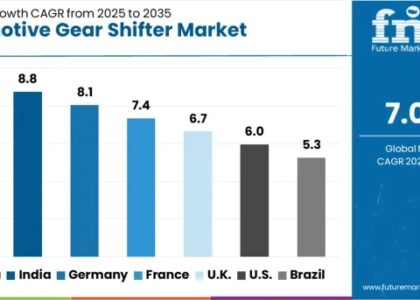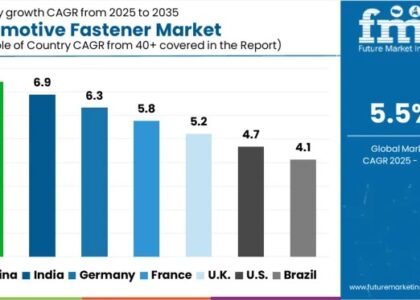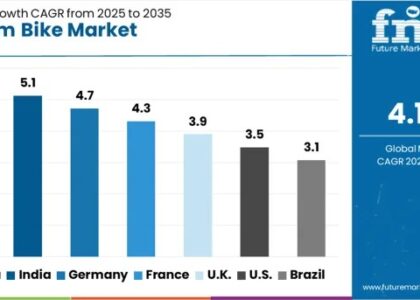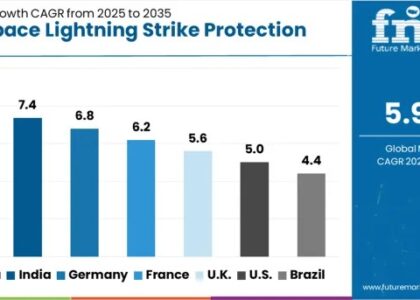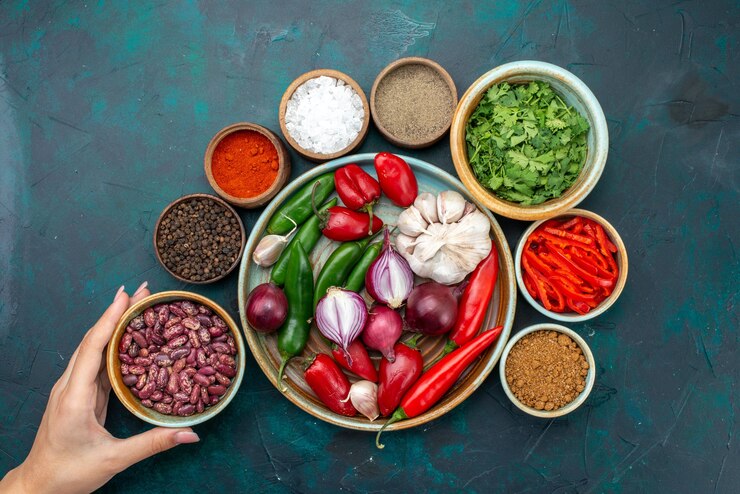
The natural food preservatives market is expected to be valued at US$ 435.2 Million in 2022 and is projected to reach US$ 856.1 Million by 2032, growing at a CAGR of 7% from 2022 to 2032.
Increased demand for convenience items, along with a focus on organic food products, has resulted in a growing preference for foods that last longer. As a result, natural food preservatives are more popular than ever before. Natural food preservative sales are predicted to increase from 484.2 million US dollars at the end of 2018 to 796.5 million US dollars by 2028. One of the key drivers of revenue growth in the worldwide company is the rapidly increasing consumption of packaged and processed goods.
People’s eating habits have altered as a result of urbanization and fast-paced lifestyles making packaged and ready-to-eat food items more accessible. Processed food and beverage commodities must be preserved using correct procedures and safe additives to extend shelf life and avoid disintegration. As a result, the need for natural food preservatives is increasing.
Discover the Power of Knowledge! Get our Report Sample Now and Elevate Your Understanding
https://www.futuremarketinsights.com/reports/sample/rep-gb-7248
Because of the negative effects of chemical compounds used in the preparation and processing of food and beverage commodities, the food and beverage industry is changing towards the use of natural food components. Because of the negative health effects of chemical additives, food and beverage companies are switching from synthetic to safer, natural food preservatives. The tough laws against the use of synthetic food additives established by governments around the world have also resulted in a prohibition on synthetic food preservatives in the F&B industry. This is yet another important factor driving the global growth of the natural food preservatives market.
Natural Food Preservatives Market Not Devoid of Challenges; Manufacturers Struggle to Contain Costs and Battle Latest and More Advanced Food Preservation Technologies
Although using natural food preservatives is beneficial for the general public’s health, the cost can be a major obstacle to the market’s long-term growth. Natural food preservatives are more expensive than synthetic alternatives since they require greater processing and production expenditures. Many mid-sized and small F&B industry companies limit their production to the use of synthetic and chemical-based preservatives due to cost reasons. The necessity for producers of packaged and processed foods to keep manufacturing costs in check is a significant revenue growth restraint in the global market for natural food preservatives.
Raw material pricing is another revenue puller. Natural food preservatives obtained from vegetables, fruits, and certain types of plants are priced according to the availability and production of raw material. Fluctuating prices of raw material impact operational efficiencies in the natural food preservatives market. Impact of unfavourable weather conditions on the availability of raw material further leads to inconsistent output, as most of the natural food preservatives are sourced from plants.
Drive Your Growth Strategy: Purchase the Report for Key Insights! https://www.futuremarketinsights.com/checkout/7248
Key Segments
Global Natural Food Preservatives Market – By Source
- Plant
- Animal
- Microbial
- Mineral
Global Natural Food Preservatives Market – By Product Type
- Microbial Derived
- Nisin
- Natamycin
- Rosemary Extract
- Botanical Extracts
- Natural Acids
- Salts
Global Natural Food Preservatives Market – By Form
- Powder/Granules
- Liquid
Global Natural Food Preservatives Market – By End Use
- Bakery
- Confectionery
- Dairy Products
- Yogurt & Sour Cream
- Cheese & Butter
- Soups
- Beverages
- Dairy-based
- Plant-based
- Juices
- Snacks
- Jams & Spreads
- Meat, Fish, & Poultry Products
- Sauces & Dressings
Global Natural Food Preservatives Market – By Region
- North America
- Western Europe
- Eastern Europe
- Latin America
- Asia Pacific excluding Japan
- Japan
- Middle East & Africa
Another challenge being witnessed in the global market for natural food preservatives is the emergence of newer and more advanced food preservation technologies that might render traditional preservation techniques obsolete in the near future. Techniques such as High-pressure Processing (HPP) – a cold pasteurisation technique that increases shelf life of food products and Pulsed Electric Fields (PEF) – a non-thermal technique that protects food from microbial spoilage through electric pulses are fast gaining traction in the natural food preservatives market. Older methods of preserving food using natural plant-derived preservatives is slowly losing significance, and this is expected to restrain revenue growth of the natural food preservatives market to a certain extent.
Explore the Depth of Our Methodological Insights
https://www.futuremarketinsights.com/request-report-methodology/rep-gb-7248
Key Questions Answered in the Report
- How much is the natural food preservatives market current worth?
Currently natural food preservatives market is worth more than USD 406.7 Mn.
- At what CAGR is the market expected to grow?
Natural food preservatives consumption is expected to grow at a CAGR of around 7% during the period 2022-2032.
- How was the performance in the last five years?
In terms of revenue, natural food preservatives grew at a CAGR of around 6.1% during 2017-2021
- What is boosting natural food preservatives sales?
The primary factor driving the growth of the natural food preservatives market is the rising demand for convenience items and an increasing focus on organic foods among people.
- How are market players reacting to the new developments in the market?
Market players are opting for technological advancement, new product developments and production capacity expansion.
- How much share does the top 5 companies hold?
The top 5 producers of natural food preservatives hold around 10-12% of the market share.
Author
Nandini Roy Choudhury (Client Partner for Food & Beverages at Future Market Insights, Inc.) has 7+ years of management consulting experience. She advises industry leaders and explores off-the-eye opportunities and challenges. She puts processes and operating models in place to support their business objectives.
She has exceptional analytical skills and often brings thought leadership to the table.
Nandini has vast functional expertise in key niches, including but not limited to food ingredients, nutrition & health solutions, animal nutrition, and marine nutrients. She is also well-versed in the pharmaceuticals, biotechnology, retail, and chemical sectors, where she advises market participants to develop methodologies and strategies that deliver results.
Her core expertise lies in corporate growth strategy, sales and marketing effectiveness, acquisitions and post-merger integration and cost reduction. Nandini has an MBA in Finance from MIT School of Business. She also holds a Bachelor’s Degree in Electrical Engineering from Nagpur University, India.
Nandini has authored several publications, and quoted in journals including Beverage Industry, Bloomberg, and Wine Industry Advisor.
About Future Market Insights (FMI)
Future Market Insights, Inc. (ESOMAR certified, recipient of the Stevie Award, and a member of the Greater New York Chamber of Commerce) offers profound insights into the driving factors that are boosting demand in the market. FMI stands as the leading global provider of market intelligence, advisory services, consulting, and events for the Packaging, Food and Beverage, Consumer Technology, Healthcare, Industrial, and Chemicals markets. With a vast team of over 5000 analysts worldwide, FMI provides global, regional, and local expertise on diverse domains and industry trends across more than 110 countries.
Contact Us:
Future Market Insights Inc.
Christiana Corporate, 200 Continental Drive,
Suite 401, Newark, Delaware – 19713, USA
T: +1-845-579-5705
For Sales Enquiries: sales@futuremarketinsights.com
Website: https://www.futuremarketinsights.com
LinkedIn| Twitter| Blogs | YouTube


